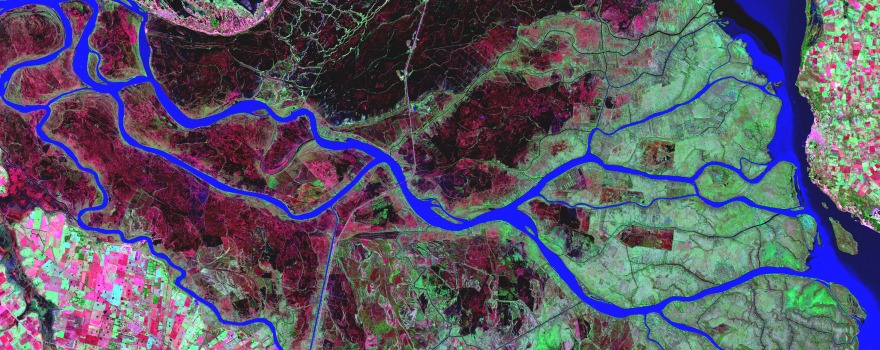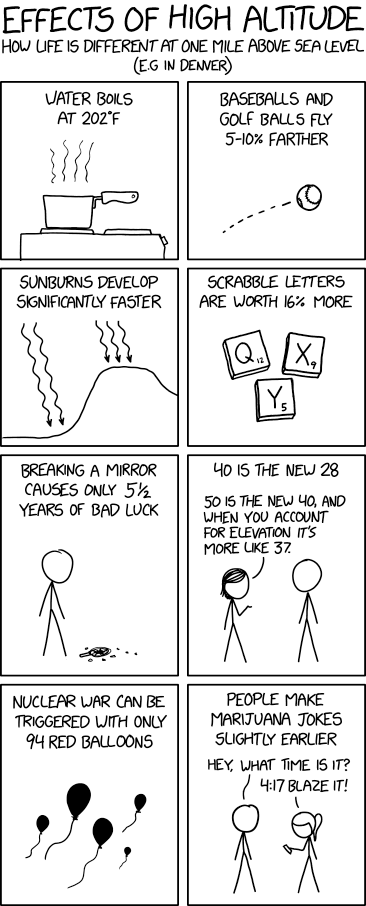
In science news this week: Reintroducing Winter Run Chinook Into The McCloud River; 180,000 salmon get a head start on their voyage to the ocean; Scientists Discover a New Coral Species Off San Francisco, and There Might be More; The UC Davis Bodega Marine Lab: Ocean Acidification Research at Its Finest; NASA’s GRACE: What researchers have learned from water in motion; What matters most on the road to scientific success?; and more …
Reintroducing Winter Run Chinook Into The McCloud River: “In this episode of the show we sit down with NOAA Biologist Jon Ambrose. Jon is the National Marine Fisheries Service’s (NMFS) salmon Reintroduction Coordinator for the California Central Valley. We talk in detail about the reintroduction efforts currently underway to bring Winter Run Chinook salmon back to the McCloud River. The plan involves deployment of a thermal curtain that stretches bank-to-bank across the upper section of the McCloud arm of Lake Shasta in an effort to capture and truck migrating juvenile salmon. We express our concerns for what a thermal curtain would mean to resident lake brown trout and rainbow trout that use the McCloud each year in the fall for spawning (at the same time the reintroduction project will be happening).” Show notes here.
Into a new world: 180,000 salmon get a head start on their voyage to the ocean as scientists hope to improve survival: “The raceways at Coleman National Fish Hatchery are the only home a select group of salmon fry has ever known. Feeding was regular, and there were no predators. Life was easy. Then they were released into an alien world — one with water currents, predators and no guaranteed meals. Life, literally, became uncertain. To help prevent excess fish loss for this at-risk species, the U.S. Fish and Wildlife Service is working on a pilot project with key partners to release 180,000 marked juvenile salmon into the Sacramento River 75 miles downstream from the hatchery, at Scotty’s Landing, near Chico, California. … ” Continue reading at the US FWS here: Into a new world: 180,000 salmon get a head start on their voyage to the ocean as scientists hope to improve survival
Adaptable Salmon and Scientists: 37th Annual Salmonid Restoration Conference: “California’s salmon and trout have persisted to survive in spite of significant challenges both past and present, highlighting that they are remarkably adaptable creatures. The recent 37th annual Salmonid Restoration Conference hosted by the Salmon Restoration Federation, in Santa Rosa, California, centered around the question of “California Drought, Fire, and Floods – Can Salmon and the Restoration Field Adapt?.” The conference was attended by approximately 600 scientists, managers, and conservationists representing academic institutions, government agencies, non-profits, and consulting firms from across the West Coast. Like the species they study, the conference highlighted that those who work on salmonid restoration are equally adaptable. … ” Read more from FishBio here: Adaptable Salmon and Scientists: 37th Annual Salmonid Restoration Conference
Scientists Discover a New Coral Species Off San Francisco, and There Might be More: “Gary Williams first spotted Chromoplexaura cordellbankensis, a new species of deep-sea coral, in 2017. Williams was on a boat 50 miles northwest of San Francisco in the Cordell Bank National Marine Sanctuary, peering through the eyes of a robot gliding through the icy darkness 300 feet below the surface. The coral is yellow and about the size of a large hairpin. Yet even though this hairpin and several dozen others like it grew on a dark rock in a dark ocean surrounded by a tangle of other life, Williams’s brain registered it immediately as something he hadn’t seen before. “You don’t say it’s new,” Williams said recently. “You say, ‘I don’t recognize it.’” ... ” Read more from Bay Nature here: Scientists Discover a New Coral Species Off San Francisco, and There Might be More
The UC Davis Bodega Marine Lab: Ocean Acidification Research at Its Finest: “As human activity increases carbon dioxide emissions, the oceans absorb more and more carbon as a result. “The ocean can take up an amazing amount of carbon,” says Tessa Hill, Professor of Earth & Planetary Sciences, UC Davis, resident at Bodega Marine Laboratory, and Associate Director of the Coastal and Marine Sciences Institute. “But the carbon makes the ocean more acidic, and this has effects on the shell-bearing creatures of the ocean. The acidic water can corrode their shells, or keep them from properly forming shells in the first place.” ... ” Read more from Environmental Monitor here: The UC Davis Bodega Marine Lab: Ocean Acidification Research at Its Finest
Extreme draining of reservoir aids young salmon and eliminates invasive fish: “A new study finds that the low-cost, extreme draining of a reservoir in Oregon aided downstream migration of juvenile chinook salmon — and led to the gradual disappearance of two species of predatory invasive fish in the artificial lake. The study is published in the journal Ecohydrology. The elimination of largemouth bass and crappie from Fall Creek Reservoir, about 30 miles southeast of Eugene in in the Willamette River basin, could have management implications for reservoirs that have been invaded by certain species of fish that eat other fish, according to Christina Murphy, a recent Oregon State University doctoral graduate and lead author on the study. … ” Read more from Science Daily here: Extreme draining of reservoir aids young salmon and eliminates invasive fish
NASA’s GRACE: What researchers have learned from water in motion: “When you hear news about ice loss from Greenland or Antarctica, an aquifer in California that is getting depleted, or a new explanation for a wobble in Earth’s rotation, you might not realize that all these findings may rely on data from one single mission: the U.S.-German Gravity Recovery and Climate Experiment (GRACE). GRACE data, collected from 2002 to 2017 while the mission was active, are still being used to improve our understanding of water in motion and its sometimes surprising effects on our planet. A new paper brings together newly calculated and existing summaries of the major results GRACE has generated, showcasing the breadth of topics the mission has illuminated over the years. … ” Read more from Phys Org here: NASA’s GRACE: What researchers have learned from water in motion
‘It’s Raining Plastic’: Researchers Find Microscopic Fibers in Colorado Rain Samples: “When Greg Wetherbee sat in front of the microscope recently, he was looking for fragments of metals or coal, particles that might indicate the source of airborne nitrogen pollution in Rocky Mountain National Park. What caught his eye, though, were the plastics. The U.S. Geological Survey researcher had collected rain samples from eight sites along Colorado’s Front Range. The sites are part of a national network for monitoring changes in the chemical composition of rain. Six of the sites are in the urban Boulder-to-Denver corridor. The other two are located in the mountains at higher elevation. … In 90 percent of the samples Wetherbee found a rainbow wheel of plastics, mostly fibers and mostly colored blue. … ” Read more from Circle of Blue here: ‘It’s Raining Plastic’: Researchers Find Microscopic Fibers in Colorado Rain Samples
What matters most on the road to scientific success? “From publishing in prestigious journals to winning Nobel Prizes, Fields Medals, and other scientific honors, recent research suggests that the most coveted indicators of success tend to remain in narrow networks: The students and postdoctoral researchers most likely to achieve them are trained by scientists who have done the same thing. That was the conclusion of a study published in an issue of the Proceedings of the National Academy of Sciences (PNAS) last December, which showed that while the total number of scientific prizes available has grown, only a small group of elite scientists are winning more than one. “The increasing concentration,” the authors wrote, “would seem to work at cross-purposes with the inclusiveness and equality ethos of science.” … ” Read more from Undark Magazine here: What matters most on the road to scientific success?
Maven’s XKCD Comic Pick of the Week …
 Sign up for daily email service and you’ll never miss a post!
Sign up for daily email service and you’ll never miss a post!
Sign up for daily emails and get all the Notebook’s aggregated and original water news content delivered to your email box by 9AM. Breaking news alerts, too. Sign me up!
About Science News and Reports: This weekly feature, posted every Thursday, is a collection of the latest scientific research and reports with a focus on relevant issues to the Delta and to California water, although other issues such as climate change are sometimes included. Do you have an item to be included here? Submissions of relevant research and other materials is welcome. Email Maven


